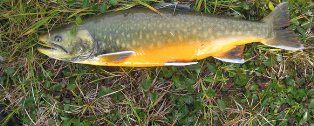Decreasing levels of POPs in Greenland biota
Most time-series of 12 POPs show decreasing trends in the Arctic Monitoring and Assessment Programme

Long-term monitoring of contaminants can detect changes in their distribution and concentrations as well as follow the impact of international agreements. The Arctic Monitoring and Assessment Programme (AMAP) monitors temporal trends of contaminants in Arctic ecosystems. Monitoring of contaminants in Greenland marine biota was initiated in 1994.
The Greenland programme has documented decreasing trends in most of the monitored POPs in several species, such as the ringed seal, black guillemot and arctic charr. The levels of most POPs are higher in biota from East Greenland than from West Greenland.
On the contrary to the decreasing trends in many species, in polar bears the levels POPs have increased in recent years. This is most likely a result from changes in feeding ecology associated with decreasing ice cover and global warming.
One of the objectives of the monitoring is to analyse the effectiveness of international regulations. The relatively rapid changes in PFOS levels in arctic biota confirm the effect of regulations. On the other hand, the levels of PCBs have been relatively stable the last 10-15 years despite that the production of these chemicals ceased decades ago.
POP emissions are regulated in the Stockholm Convention, which aims to safeguard human health and the environment from harmful chemicals that persist in the environment and affect the well-being of humans and wildlife. The parties are required to eliminate or reduce harmful POPs.
Read the article by Riget et al (2015) "Twenty years of monitoring of persistent organic pollutants in Greenland biota. A review" in Environmental Pollution.
